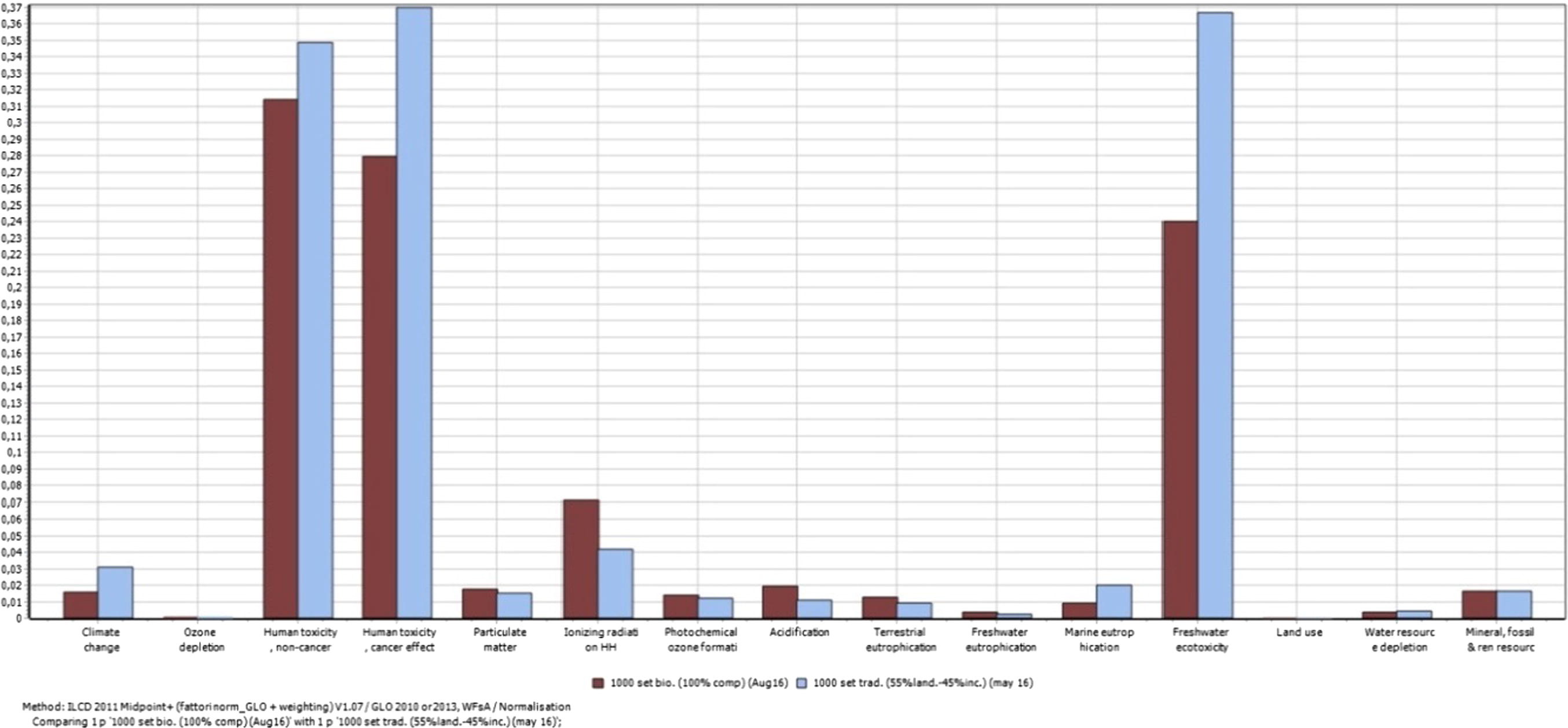Case Study on Biodegradable Packaging
Biodegradable waste
Among other alternatives, biodegradable and biobased plastics are often seen as a promising solution to tackle the numerous problems of petrochemical plastics (depletion of non-renewable ressources, persistant pollution in natural habitats, creation of microplastics etc..). The example presented here studies the effect of the use of biobased and biodegradable polymers for the fabrication of single use objects used in the catering and food services sector (canteens, hospitals, schools, sports events and festivals, ...). Catering and food services are responsible in the EU of 12 % of the estimated 100 million tons of food waste generated every year.
Today, an important part of food waste and biological waste is disposed in landfills because of the lack of existing facilities for waste-treatment, where it is subjected to anaerobic conditions. The result of this is that food-wastes in landfills cause an important production of methane. Even if this environmental problem was partially treated by the european legislation on these points, there is a rising consensus on the fact that biodegradable wastes should not be treated in incineration or landfills. Some European countries have already invested in specific infrastructure for the treatment of biowaste (Belgium, Italy, ..), but others only are just starting. The main technological solutions for the biological treatment of organic wastes are methanization and composting facilities. The European regulation pushes towards progressive enforcing of biowaste treatment using biological processes.
Sorting of wastes in the catering is often difficult, because food containers composed of different types of polymers and left-overs of the food are intermingled. In particular, after big events, like festivals or sports happenings, big quantity of mixed wastes are collected. The presented case study studies explores the opportunity of either sorting and washing of plastic wastes from single use containers or composting containers together with food wastes.
Presentation of the case study
Note: This peer-reviewed article was in part financed by Novamont, one of the European leaders in the fabrication of biodegradable plastics.
The study of Fieschi et al. 2018 (article) compares two scenarios of waste management in the food-service sector: the use of biodegradable tableware and the use of conventional tableware using petrochemical plastics.
The functional unit the supply of 1000 meals using 1000 sets of single use tableware composted of one dinner plate, one knife and fork, a tableware pocket, a tray mat and a napkin. The served meal was assumed to generate 150 g of organic waste per meal, i.e. 150 kg per functional unit.
| Biodegradable tableware | Traditional tableware | |
|---|---|---|
| Main materials used | PLA, Mater-Bi, Paper | Polystyrene, Polypropylene, Paper |
| EOL scenario considered | Composting | Incineration (55%), Landfill (45%) |
*EOL.. End-Of-Life
The avoided burden from composting is the production of chemical fertilizers.
The avoided burden from incineration is energy production.
Results
- The environmental impacts of biodegradable polymers are strongly related to their agricultural production: the impact on land use was for example 60 % higher and the acidification higher by 78 % in the biodegradable tableware scenario as compared to the petrochemical benchmark.
- Impacts on climate change are reduced by 51% in the biodegradable tableware scenario, impacts on human toxicity (reduction 30 % impact cancer effects), and marine eutrophication (- 57 %).
- Mineral, fossil & renewable resource depletion are approximately at the same level for both of the scenarios, because agricultural production uses of fossil fuels and chemical fertilizers.
- A clear advantage of the one of the systems cannot be found.
The authors underlign that some ecological benefits of composting are not yet taken into account by LCA.
The normalization of the LCA results using normalization factors developed by the JRC IES allows to estimate their contribution to the general impact of a person or a country has in the given impact category. The normalized impact assessment figures air obtained in person equivalents, for example. The normalization factors are subject to constant development, the quantitative results of Fieschi et al. 2018 might have evolved.
The figure below shows the data after normalization. It appears that for the impact categories human toxicity (cancer and non-cancer) and freshwater ecotoxicity have the highest weight, which gives an advantage to the scenario using biodegradable tableware.
Note: The robustness of these normalization factors for these impact categories is "low to medium". The results must therefore be interpretated with caution.

Figure 1. Normalized impacts of biodegradable and non degradable tableware
Reference:
M. Fieschi, U. Pretato, Role of compostable tableware in food service and waste management. A life cycle assessment study, Waste Manag., 73 (2018) 14-25. https://doi.org/10.1016/j.wasman.2017.11.036